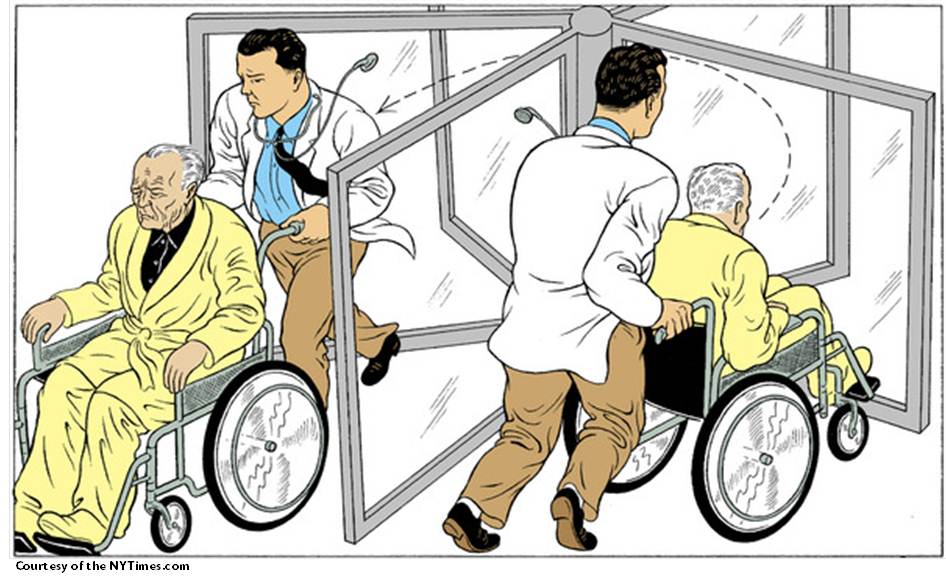As a writer and observer I mostly feel superior that I don’t live in a silo or at least not a very deep one. The conference I attended last week proved me wrong.
Last Thursday I spent the day at the first-ever Southern California readmission summit where I met a bunch of interesting people, saw a few old friends and readers and heard some presentations by some really bright experts. What was most striking was getting a chance to see how hospitals, hospital systems and experts outside the senior living industry are looking at and thinking about the readmission problem. Going into the summit I honestly had not idea about the things I didn’t know I didn’t know (silos).
Insights that helped to crumble my silo
Here are the highlights:
- More than anything else I was reminded of how important it is to take an occasional detour into areas that are connected to, but not specificaly about, senior living. These detours will put you strategically miles ahead in how you future-proof your company. You will better understand how other segments of the eldercare marketplace view senior housing (or hardly view senior housing at all). Here are some suggestions for areas to explore:
1. Hospitals; if you are a skilled nursing provider check out some assisted living events.
2. If you are an assisted living provider check out events aimed at skilled nursing
3. Home health
4. Hospice
5. And, completely outside the industry, things like web publishing, marketing and content marketing.
A specific one you might consider is the What’s Next Boomer Business Summit in San Diego where I will be moderating a panel. We have a special Senior Housing Forum discount code that will get you 20% off: wn14smoran
Other thoughts on this topic:
- When hospitals and related entities look at assisted living, they see it as a functional equivalent of an elder living at home. – A whole article coming on this problem and the opportunity.
- Given the potential cost of readmissions, you would think hospitals really have it dialed in. Most don’t.
- While still a few years out, readmission penalties will extend to skilled nursing facilities.
- From the hospitals’ perspective, good care transition from the acute hospital to post-acute care is key to reducing the risk of readmission. This means that hospitals are beginning to do a better job of discharge planning and more aggressively being “hands-on” in at least the first 14 days of discharge from the hospitals, since most preventable readmissions happen during that period.
- Post-acute networks will become more and more prevalent which will create both winners and losers, particularly in the areas of skilled nursing, home care, hospice and palliative care. Over time, while the impact will be smaller, the impact will spread to assisted living. – This will be more flushed out in a future article.
- I found myself in a technology parallel universe. I spent a lot of time exploring technology in the senior living space. What was startling was that several technology areas that have shown up as cutting edge at an event like AgeTech West are already being tackled in the acute hospital space. One or two of those things were no better than what I saw at AgeTech, but others were substantially ahead. The good news for AgeTech entrepreneurs is that these technology companies seem so focused on the world of acute hospitals, they are not paying much attention to the rest of the world.
Right now, the healthcare system is particularly focused on the readmission problem for good reason; It has the potential to cost hospitals a ton of money and, in fact, the penalties are working to accomplish the intended goal. But as the Affordable Care Act becomes increasing pervasive (I would not bet on it being repealed) this is just the tip of the iceberg of change. Paying attention will yield substantial opportunity and not paying attention could leave you out in the cold. Steve Moran
If you like this article (or even if you don’t) it would be a great honor to have you subscribe to our mailing list HERE.






thanks for the discount coupon – very nice of you – good karma!!